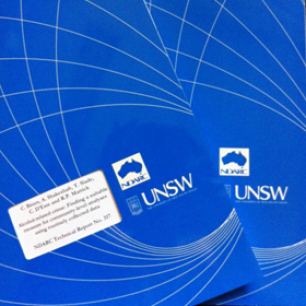NDARC Technical Report No. 87 (2000)
SUMMARY OF DRUG TRENDS
Based on the key informant survey and additional data sources a number of drug trends were identified.
Heroin: The price, purity and availability of heroin appear to be relatively stable. There was some evidence of a small drop in the price of a cap, coupled with a fluctuating but overall increasing purity level. Heroin is reportedly very easy to obtain, and there were reports of more heroin users, younger heroin users, more female heroin users and a wider range of people using heroin. Also of note were reports of more amphetamine use among heroin users, more Hepatitis C among heroin users, and more overdoses among heroin users.
Amphetamine: Trends in amphetamine use were tied to a recent shift from use of powder ('street speed'), usually sold in grams, to the more potent methamphetamine base, sold in 0.1 gram 'points'. Tied to this shift was a trend towards more injection of amphetamine, more Hepatitis C, more needle risk-taking behaviour and poorer vein care among IDU. Amphetamine appears to be relatively cheap, with the price stable or perhaps decreasing slightly; the purity of amphetamine is increasing and is higher in Queensland than in any other state (McKetin, 1999). Amphetamine appears to be very easy to obtain and getting easier, with more dealers, more users, more young users, and more amphetamine users seeking treatment. With the increase in IV use of amphetamine there has been a concomitant shift towards more heroin use among amphetamine users, and more polydrug use generally. There also appears to be an increasing amount of drug-induced psychosis among amphetamine users.
Cocaine: Reports suggest increased availability of cocaine in Queensland, coupled with more regular use, more IV use and a larger number of users overall. Despite this trend, most cocaine users still use only sporadically, and in most cases intranasally. The purity of cocaine appears to be increasing, while the price is fluctuating but presently (during the latter half of 1999) declining.
Cannabis: Cannabis remains the come-down drug of choice for many heroin and amphetamine users. The price is stable and availability remains high, as does the purity. Hydroponically grown cannabis is more common and more people, particularly young people, appear to be smoking cannabis. Despite a continuing trend for cannabis not to be seen as an illicit drug, there are reports of an increasing amount of psychosis and other mental illness associated with cannabis use, and reports of more IV use of heroin and amphetamine among cannabis users.
Other drugs: Polydrug use remains quite high among methadone clients, while IDU may be losing interest in methadone maintenance programs. Illicit use of benzodiazepines is still very common among IDU; both licit and illicit antidepressant use are common and increasing, particularly among amphetamine users. There appears to be a renewed interest in ecstasy (MDMA), apparently prompted by more stable purity and reduced price. Drug 'cocktails' are becoming increasingly
common.
Drug-related issues: Of note were an increase in the occurrence of drug-induced psychosis, more polydrug use and an increase in overdose among heroin users. With a shift towards injection of amphetamine there were reports of more Hepatitis C among IDU, and more injection-related problems. Key informant reports also suggest that more users are dealing to support their habit, and that the increase in psychosis is resulting in more aggression and more violent crime. On a more positive note key informants believed that police officers are more informed about drug use issues generally, and in particular are more sensitive to the needs of users.
Research implications: Findings of the 1999 Queensland IDRS suggest the following areas for further investigation.
- Research into harms associated with amphetamine use, and identification of methods to reduce these harms
- Exploration of the characteristics of polydrug users
- Identification of factors influencing the decision to inject amphetamine
- Continued research into ways of bridging the gap between knowledge of safe injecting practices and actual safe injecting behaviour
- Investigation of pathways from cannabis use to injecting drug use
- Identification of the antecedents of co-dependent heroin and amphetamine use
- Clarification of the form and purity of methamphetamine 'base' being sold and used by amphetamine IDU in Queensland
Note that some of these issues have already received some research attention.


